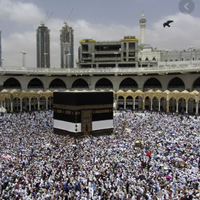Ethnicity is a major determinant of the pattern of dermatological diseases among pilgrims during the Hajj in 2019
 Smart Citations
Smart CitationsSee how this article has been cited at scite.ai
scite shows how a scientific paper has been cited by providing the context of the citation, a classification describing whether it supports, mentions, or contrasts the cited claim, and a label indicating in which section the citation was made.
The authors aim to explore the pattern and demographics of dermatological disorders occurring during Hajj 2019. Clinical records from three major public healthcare facilities in Al-Madinah Al-Munawara were retrieved for the period July-August, 2019. Collected data included age, gender, nationality, and dermatological complaints. 550 records were retrieved. Patients were 282 (51.3%) males and 268 (48.7%) females with a mean age of 58.3±12.6 years. Most patients were Asians (n=320, 58.2%), and Africans (n=183, 33.3%). Accidents (n=226, 41.1%), and infections (148, 26.9%) were the most common complaints. Asians and Africans had significantly: more accidents and less infections (P=0.002, P=0.027 respectively). They were the only category affected by exacerbations of auto immune diseases. Asian and African pilgrims are mainly affected by traumatic dermatologic conditions. Preventive awareness programs should target these ethnicities to reduce their higher rates of accidents. Other ethnicities need programs that promote hygienic practices and target infections.





 https://doi.org/10.4081/dr.2021.8934
https://doi.org/10.4081/dr.2021.8934





